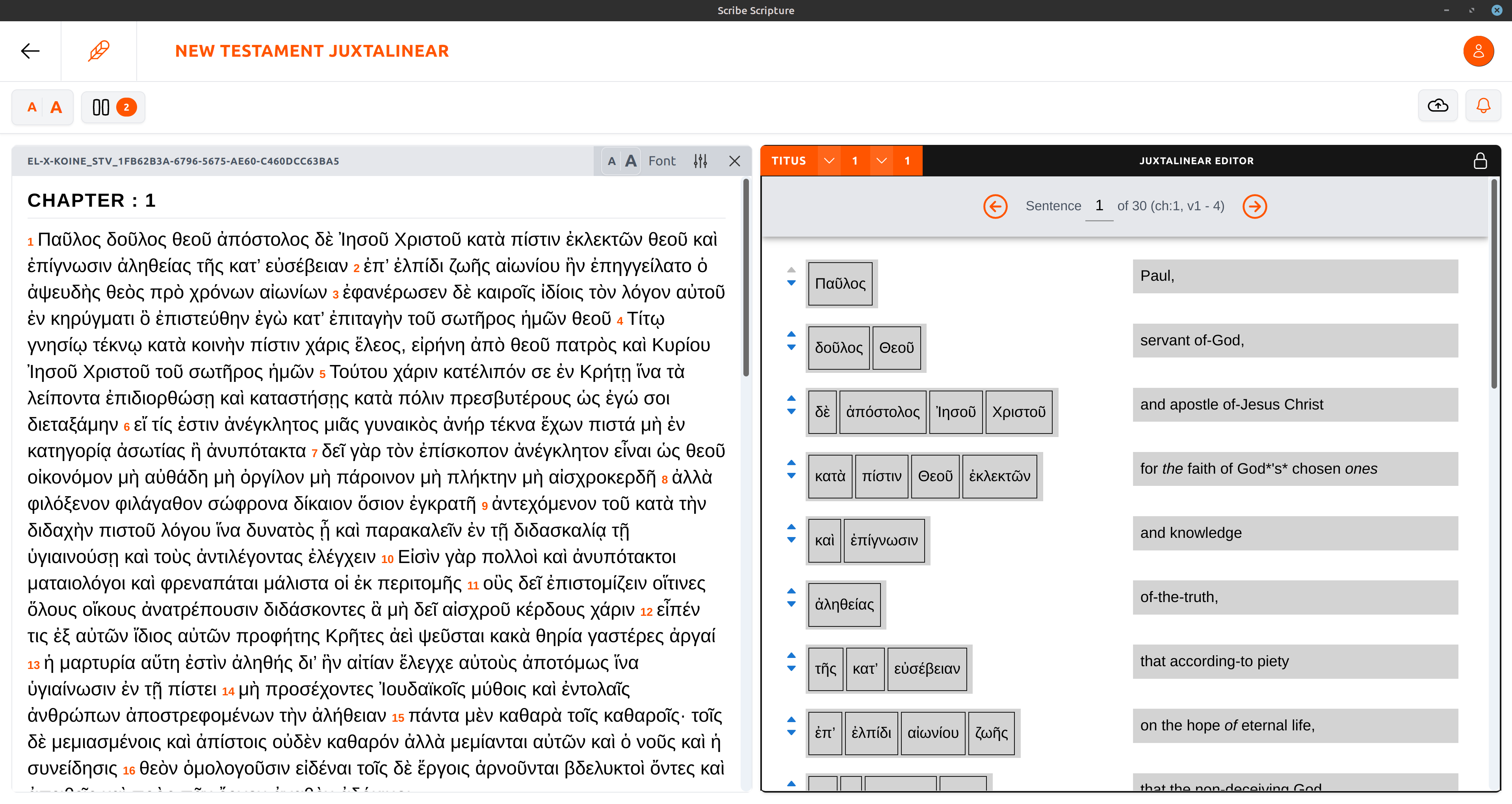What is Juxtalinear?
A juxtalinear is a bilingual view of a text. It has two columns:
- on the left, a Source Text is rearranged and broken up into small grammatically-meaningful chunks;
- on the right, a hyper-literal translation of each chunk.

Juxtalinears provide a bridge between Source and Target Languages. The hyper-literal translation is very close to the Source Text meaning, in a way that limits the risks of misinterpretation. Additionally, the chunks size (a few words that belong together grammatically) provides context. In the end, juxtalinears are comprehensible and leave open most contended options in interpretation.
Juxtalinears are starting to be used within the CCBT context. The common use case would be:
- a linguist familiar with Greek creates a Greek to Gateway Language juxtalinear;
- CCBT translators use the juxtalinear along other Gateway Language resources, to help them get a clearer idea of the original text meaning.
Juxtalinears can be done from any language to any other, but it is commonly done from an ancient language (Greek or Hebrew) to a Gateway Language.